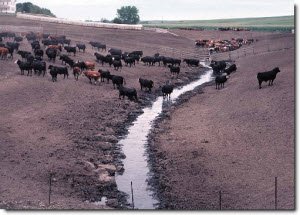What is Occupational Health And Environment?
b)occupational health deals with all aspects of health and safety in workplace and has a strong focus on primary prevention of hazards.
Why we study on occupational health&environment.
a)To foster a safe and healthy work environment
b)Protect co-workers,family members,employers,customers and many others who might affected by the workplace environment.
Why we must prevent accident
There are 3 terms to prevent accident
Law
Based on the Occupatinal Safety & health Act 1994
-to protect others against risk to safety health
-to establish the National Council for Occupational Safety and Health
Economic
-to increase the productivity
-to increase the profitability
-to rise the image of certain companies
-to reduce the fines to certain people.
-to reduce the compensatory damages
-to investigation time
Morale
-workers deserve to be safe
-aware from their right
-their walfare was assured by the Occupational Health and Safety Officer.
OHE or KPAS Unit
-Occupational Health & Environment Unit (Unit Kesihatan Pekerjaan & Alam Sekitar)
-to control and coordinates all activities related to occupational health among health personnel and environmental health aspect in the community.
This unit devided by two scope which is;
Occupational Health.
-Promote health & safety awareness among the employees and responsibility to control and protect themselves from occupational hazards at workplace.
-Instill physical & mental strength to employees in connection with the workload to avoid stress at work.
-Continuous monitoring among health personnel who are exposed to hazards at workplace.
Risk of Occupational Health
The risk of workers suffering from occupational diseases is dependent on the following factors;
a)The type of hazard
b)duration of exposure
c)the number of hazard exposed
d)socio-demographic factors(e.g. age ,gender ,ethnicity and health history)
e)The use of PPE (Personal Protective Equipment)
The scope &activities OH
1. Establish Safety & Health Committee in health facilities
2. Audit Safety and Health at workplace
3. Conducting risk assessment in all KMM facilities
4. Notify poisoning cases (pesticide/chemicals), occupational injuries (fall, cut, needle-stick Injury) or occupational disease (TB, hearing loss, skin disease, lung disease) among health personnel and investigate the cases.
5. Audiometry, stress, Hepatitis B Screening
6. Disease Prevention & Control programme
7. Provide training (chemical handling, safety etc.)
Monitoring & inspection of several organization such as:
1. PLKN (national service training program)
2. Prison '
3. Detention camps
4. Sanitary Inspection at school, market, recreational park, estates residential, farm
5. Management of environmental pollution
6. Investigation of open burning and nuisance complaints
7. Inspection of solid waste disposal sit
8.inspection of building plan/renovation/sewerage plan
9.building inspection for Certificate of Fitness For Occupancy(CFO) .
10.cementary inspection
11.certificate of import/export of body parts or corpse,body ashes.
12. inspection of TASKA,TADIKA, /TABIKA,University and colleges.
Regulation Involved
1. Occupational Safety & Health Act 1994 (Act 514)
2. Factories and Machinery Act 1967 (Act 139)
3. Education Act 1996
4. Care Centres Act 993 (Act 506)
5. Private Higher Educational Institutions Act 1996
Tools
Commonly practices, in order to assess occupational health and environmental health scope/study;
• Occupational health & safety – HIRARC, CHRA (DOSH)
• Environmental & Health – EIA, HIA, EHIA (DOE)
HIRARC
HIRARC is an integration tool to identify, assess/measure and to control hazard and risk of any workplace and its activities.
CHRA
The Chemical Health Risk Assessment (CHRA) is an assessment that has to be conducted by the employer arising from the use, handling, storage or transportation of chemicals hazardous to health in their workplace.
EIA
-Environmental Impact Assessment (EIA) is a study to identify, predict, evaluate and communicate information about the impact on the environment of a proposed project and to detail out the mitigating measures prior to project approval and implementation.
HIA or EHIA
• WHO defines HIA as “a combination of procedures methods and tools by which a policy, program or project may be judged as to its potential effects on the health of a population, and the distribution of those effects within the population,”
• HIA is the process of estimating the potential impact of a chemical, biological, physical or social agent on a specified human population system under a specific set of conditions and for a certain timeframe.
Reference
(all this notes based on our lecturer, Sir Mohd Jamalil Azam)
(https://en.wikipedia.org/wiki/Occupational_safety_and_health)






